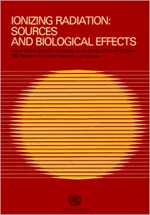3.2 Man-made radioactive contaminants
Man-made sources of radiation imply natural radioactive materials concentrated or relocated by human activity, artificially generated radionuclides, nuclear reactors and various other sources emitting radiation.

Nuclear bomb tests conducted in the atmosphere since 1945 have resulted in the introduction of artificial radionuclides into the environment. The most long-lived radionuclide from nuclear fallout is 137Cs. The concentration of 137Cs has a maximum concentration in the northern hemisphere between 40-50 degrees latitude and a mean surace activity up to 2.9 kBq/m2 (UNSCEAR, 1982).
Other causes of nuclear fallout are accidents in the nuclear power industry followed by the release of radionuclides into the atmosphere. Short-lived fallout radionuclides decay rapidly – usually to negligible proportions within days or weeks. But high concentrations of 137Cs, accumulated in the upper 10 cm of the soil can remain in the environment for many decades, with a surface activity in the range of hundreds and thousands of Bq/m2. Lost nuclear sources and nuclear power accidents may have local radiation consequences.
Medical diagnostic equipment that use radioactive sources contribute significantly to annual absorbed doses – typically increasing the annual absorbed dose to natural radiation with an additional 20-30%.